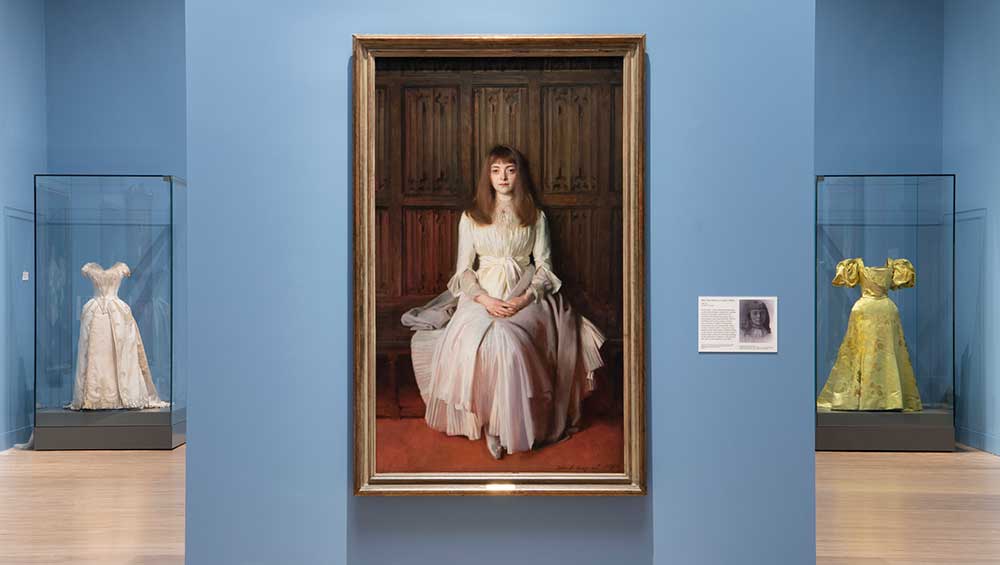
Sargent and Fashion, installation view with Miss Elsie Palmer, 1889-90 and House of Worth dresses at Tate Britain 2024. Photo © Tate (Jai Monaghan).
Tate Britain, London
22 February – 7 July 2024
by CHRISTIANA SPENS
In 1883, young John Singer Sargent (1856-1925) sought out the Louisiana-born socialite Virginie Amélie Avegno, who had moved to Paris with her mother after her father died in the American civil war. Sargent painted Avegno, who was known around Paris for her striking, vivacious appearance and scandalous affairs, in a svelte black dress, one hand grasping the satin of its skirt, and one of its straps falling over her pale shoulder, her head turned away dismissively. This extraordinary portrait was met with shock and ridicule, with critics labelling it as brazen and overtly seductive. “All the women jeer. Ah voilà ‘la belle!’ ‘Oh quelle horreur!’ [Ah, here is ‘the beauty!’ ‘Oh how awful!’].”1 A critic writing in the Art Amateur, called the painting “a wilful exaggeration of every one of his vicious eccentricities, simply for the purpose of being talked about and provoking argument”.2
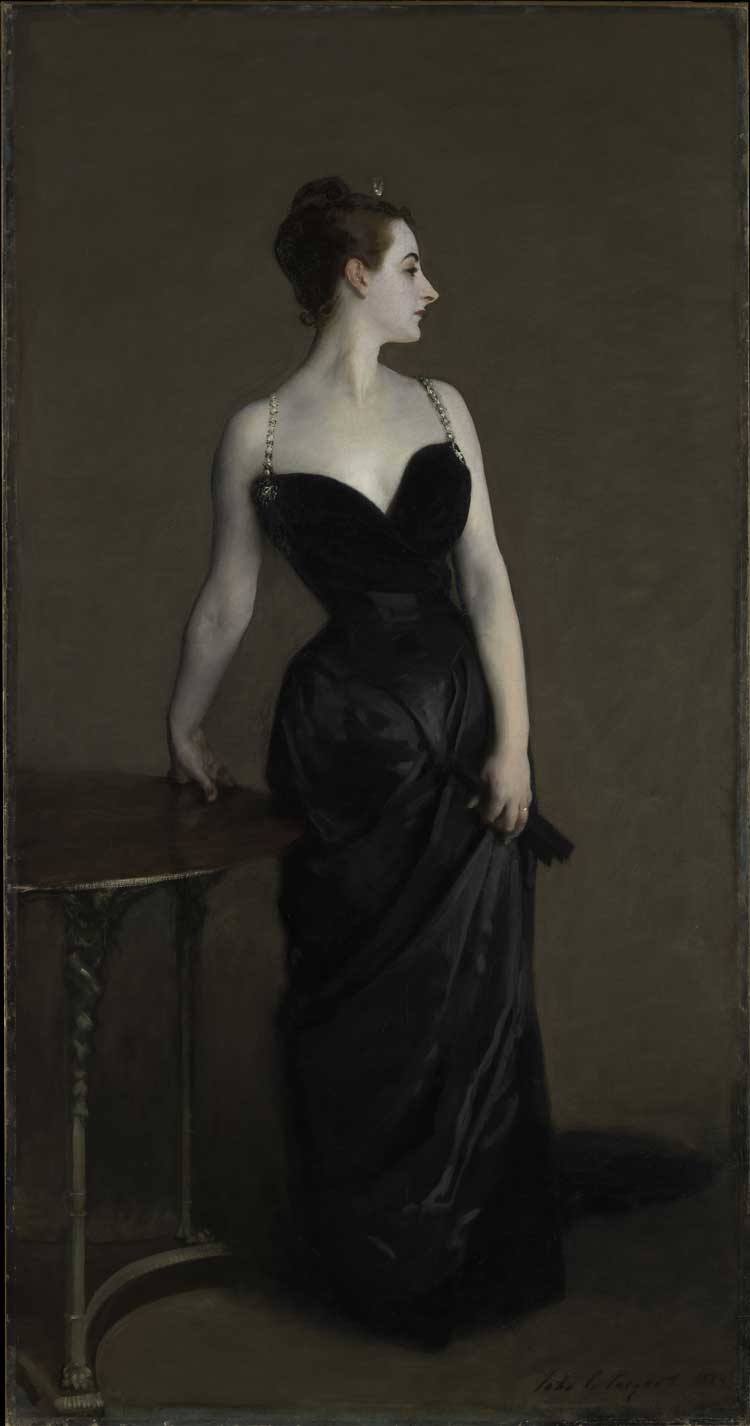
John Singer Sargent, Madame X, 1883-84. Oil paint on canvas, 208.6 x 109.9 cm. Lent by The Metropolitan Museum of Art, Arthur Hoppock Hearn Fun, 1916. Image copyright The Metropolitan Museum of Art / Art Resource / Scala, Florence.
In an attempt to appease his critics, Sargent repainted the strap so that it no longer fell down so suggestively, but the reactions to Portrait of Madame X (1883-84) did not change. The painting’s daring sensuality was too much for the Paris Salon, and the scandal of its exhibition was not without consequence. Sargent’s French commissions began to dry up and he considered quitting painting and perhaps becoming a musician or businessman instead, as he told his friend Edmund Gosse. But another friend – Henry James, no less – encouraged him to relocate to London, and, in 1885 he moved to a house on Tite Street in Chelsea, a few doors down from Oscar Wilde. He may have been ostracised by the Salon, but better things awaited; London’s new bohemian scene offered freedom and friendship that would inspire some of his greatest work. Now, nearly 140 years later, they are together in one exhibition, along with some of the dresses, embellishments and photographs of the people who inspired them.
Tate Britain’s show, however, has already been derided by some critics, outraged that emphasis is placed on the role of fashion in these works – which is a funny reproach, given that the cut of a dress was part of the reason Sargent was ostracised by the art establishment in the first place. Fashion is still considered inherently frivolous, it would seem, rather than an obvious means of constructing a work – in the way one may use particular objects in a still life, rich with symbolism. Such snobbery about mentioning the role of fashion in portrait painting barely conceals age-old puritanical and sexist attitudes. It is like damning a study of Philip Roth and sex, or Robert Mapplethorpe and bondage gear, or tulips – a strange way to find fault with an artist, or rather how we consider their work.
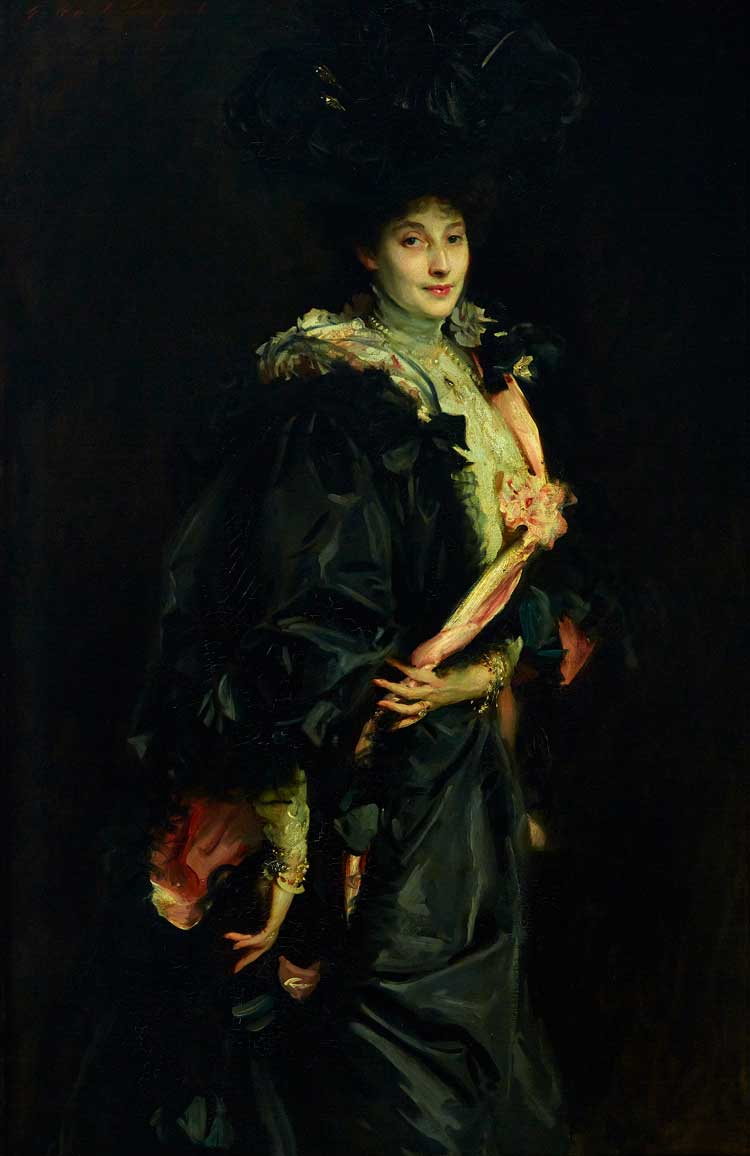
John Singer Sargent, Lady Sassoon, 1907. Oil paint on canvas, 157.5 x 104 cm. Private Collection. Image © Houghton Hall.
In Portrait of Madame X, the sumptuous black dress reveals so much about how Avegno presented herself to other people, and Sargent intended this. This was not the only instance of his interest in wardrobe choices. He insisted that W Graham Robertson wear a particular coat for his portrait, saying: “The coat is the picture. You must wear it.” And he was very specific about how other of his subjects were dressed for their paintings. For Dr Pozzi at Home (1881), he chose to have the famous Parisian gynaecologist wear a crimson dressing gown in the comfort of his home, which was very unconventional for a portrait of a professional man. Dr Pozzi, in a dressing gown that is dazzling in its rich shades of red, stands proudly against a darker red backdrop, hand on his hip, his fingers holding his collar, from under which can be seen a white ruffle.
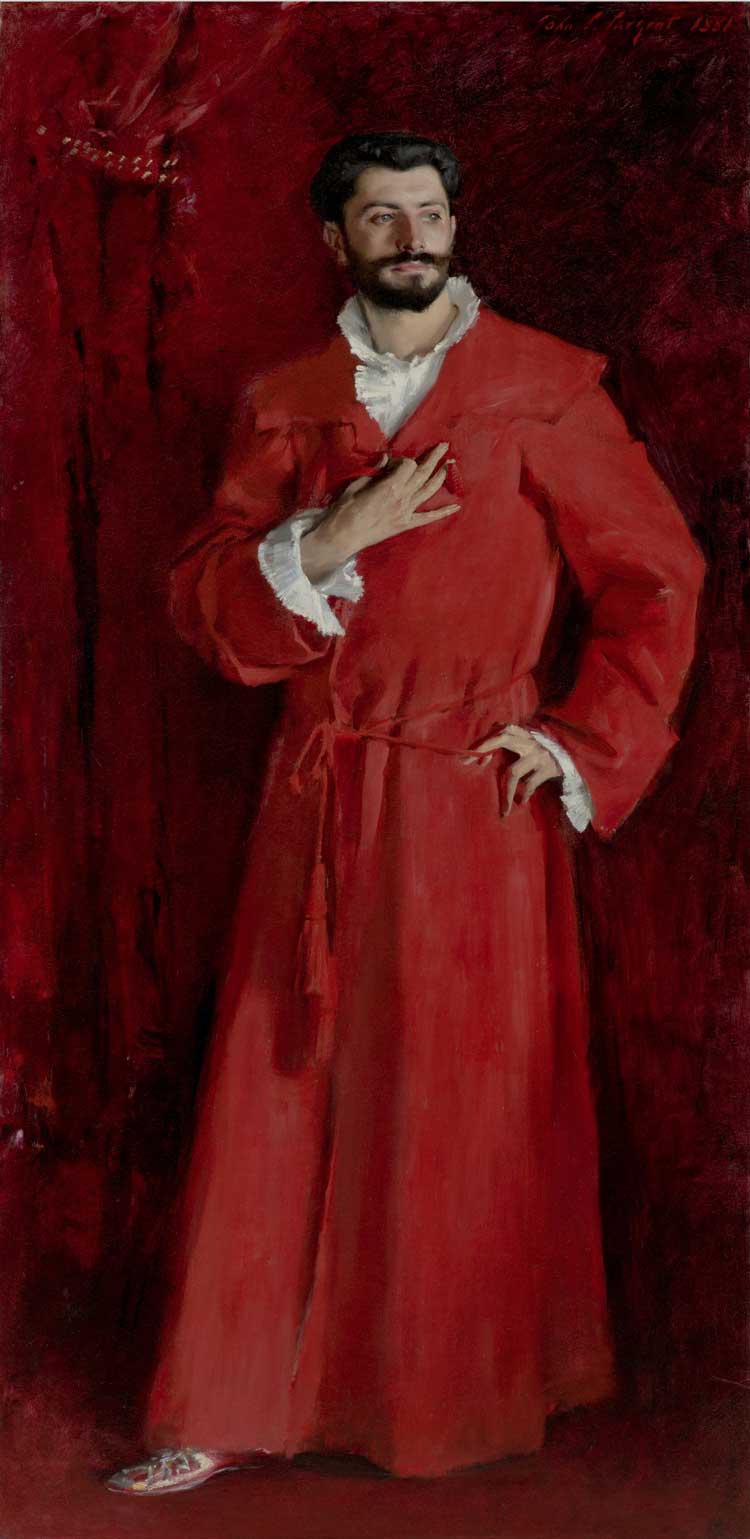
John Singer Sargent, Dr Pozzi at Home, 1881. Oil paint on canvas, 201.6 x 102.2 cm. The Armand Hammer Collection, Gift of the Armand Hammer Foundation. Hammer Museum, Los Angeles.
These clothes were a veil between the subjects and the world in which they stood – between flesh and place, between the self and other people. Dresses, feathers and dashing long coats are objects that wrap around people and communicate some message to those in their social circles – a dance between self and environment. Fashion is deeply ritualistic in this sense, and Sargent embraced and embedded this performativity throughout his career, depicting luxurious, dramatic figures.
,-1889-1890.jpg)
John Singer Sargent, Portrait of Miss Elsie Palmer (A Lady in White), 1889-90. Oil paint on canvas, 190.8 x 114.6 cm. Colorado Springs Fine Arts Center (Colorado Springs, USA).
In Becca Rothfeld’s essay More is More, published in her new book All Things Are Too Small, she considers the recent trend of minimalist thinking, in life (Marie Kondo) and art (fragment novels), in the long tradition of reining in excess, chaos and more. Rothfeld praises a maximalist approach however, not simply with regard to the embracing of clutter and cohesive novels, but in letting life spill out of its physical and mental constraints – celebrating what may seem to some as excessive, luxurious, and debauched. Aligning with a Romantic disposition in this regard, Rothfeld also considers the transformative, liberating nature of sensuality, which bleeds into horror and the grotesque, in breaking and remaking ourselves through reverberating clashes with the world and other people.
As Lauren Elkin also noted in Art Monsters, unruliness and excess is key to an artist’s development and new, experimental achievements. Without subversion and full-bodied risk-taking, we would be limited, shallow and blandly obedient, bearing the crushing burden of social restraint to the detriment of one’s creative and romantic spirit. We may have moved out of Sargent’s Victorian era, but our culture can still be quite puritanical and bleak, one’s sensuality still policed and shamed by those who fear it. There will always be prudes and snobs, but it is heartening to visit these works, created 140 years ago, which so triumphantly subvert those staid criticisms, even as they receive fresh derision.
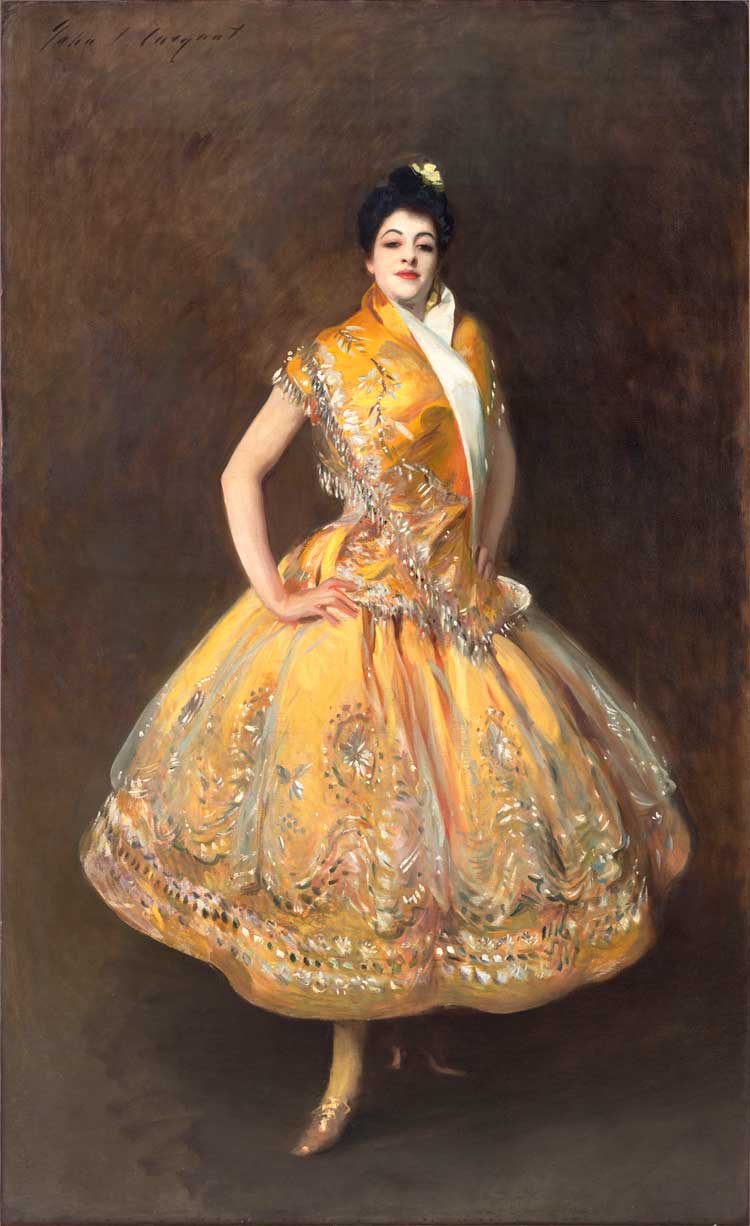
John Singer Sargent, La Carmencita, 1890. Oil paint on canvas, 221 x 114.3 cm. Paris, musée d'Orsay. Photo © Musée d'Orsay, Dist. RMN-Grand Palais / Patrice Schmidt.
Sargent’s work is relatively refined, but its balance depends on an edging towards the luxurious, the unconventional staring down from his arresting subjects, the striking sensuality that flows through all his work. He searches for a synthesis of performance and self, meeting his subjects in the flurry of their social theatre and finding intimacy in a revealing turn or a wanting gaze. The combination of formal restraint and a flair for subversion results in provocative, intriguing, and deeply moving portraits. Their want for things, for the drama of presentation, their desire to be immortalised through paint, no less, is clear and dazzling. These are uncomfortably human hungers. Buried with their things like Vikings or Mummies – alive for ever as a painted look, a glance, a turn –many of Sargent’s subjects and patrons are captured by him in their most naked desire for more of everything.
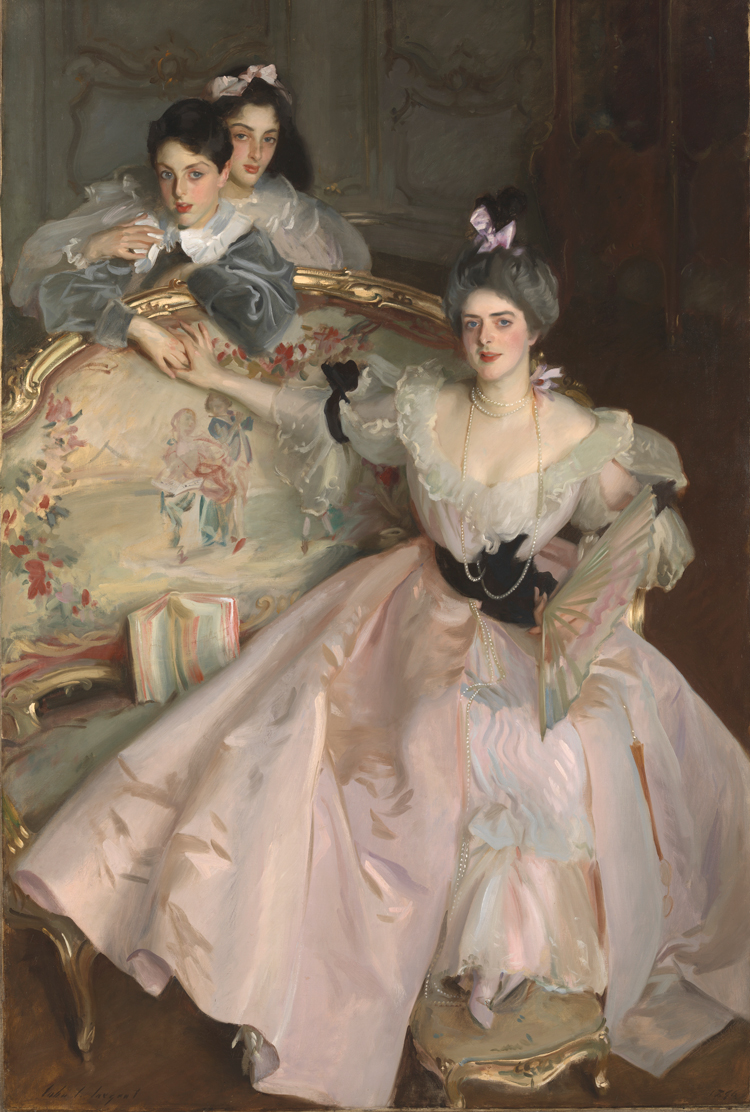
John Singer Sargent, Mrs Carl Meyer and her Children, 1896. Oil paint on canvas, 201.4 x 134.0 cm. Tate. Photo © Tate.
For Sargent, the emphasis on fashion and theatre, and the subtle playfulness with gender norms that this allowed, were a reflection of his own flamboyant life. Reported to have had a series of homosexual relationships, at that time outlawed, these portraits of society players and thespians are a subtle but steadfast representation of Sargent’s circles, his aesthetic and social sensibility. The painter Jacques-Émile Blanche, who was one of his early sitters, said after Sargent’s death that his sex life “was notorious in Paris, and in Venice, positively scandalous”. It is fair to say that he embraced a life of passion, daring and sensuality himself, and this is reflected in his work. Not easily categorised in one artistic school or another, Sargent nevertheless showed influences from the decadent movement that his peers Wilde and the pre-Raphaelites epitomised, as well as the impressionists. He was called a “bravura realist” for his dazzling yet life-like paintings, always possessing a drama and eroticism that set him slightly apart from peers such as Monet. Famously, Sargent announced he could not paint when he went to visit him in Giverny, as Monet had no black paint.3
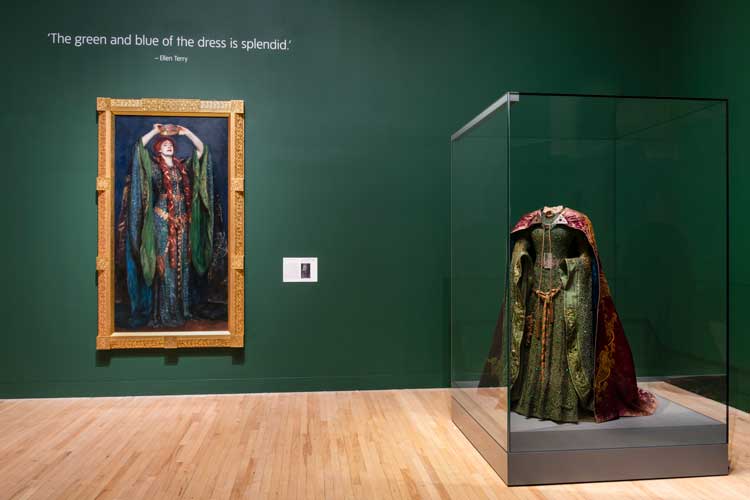
Sargent and Fashion, installation view with Ellen Terry as Lady Macbeth and Beetle-Wing Dress at Tate Britain 2024. Photo © Tate (Jai Monaghan).
Indeed, there is a darkness to Sargent’s palette, and in this show, a whole room of black paintings. He painted half his female sitters in black gowns, and several portraits have their subjects emerging from darkness. In another room dedicated to more overt performers, there is Ellen Terry as Lady Macbeth (1889), the actor electric in her pose, as she raises a golden crown above her head, swathes of blue and green silk and her magenta hair falling from her arms, recollecting the style of the pre-Raphaelites. And yet for all the costume and dramatics, Sargent’s portraits feel very direct and real, the mood of the sitter and these particular moments so clear and strangely relatable. In Nonchaloir (Repose) (1911), his niece, Rose-Marie Ormond, reclines on a sofa, elegant and exhausted, in this luxurious yet melancholic scene. In these moments, for all the luxury, Sargent’s paintings are compassionate and moving, capturing want and satisfaction, desire and exhaustion, poise and detachment.
References
1. John Sargent by Evan Charteris, published by Charles Scribner’s Sons, New York, 1927, page 61.2.
2. John Singer Sargent in The Metropolitan Museum of Art by Stephanie L Herdrich and H Barbara Weinberg. In: The Metropolitan Museum of Art Bulletin, volume 57, No 4, 2000.
3. See: John Singer Sargent and the Art of Elegance by Timothy Sandefur, The Objective Standard, 20 August 2020.